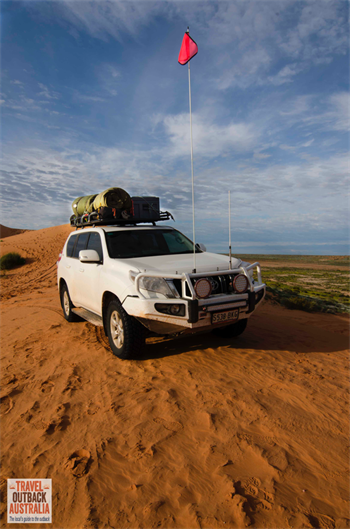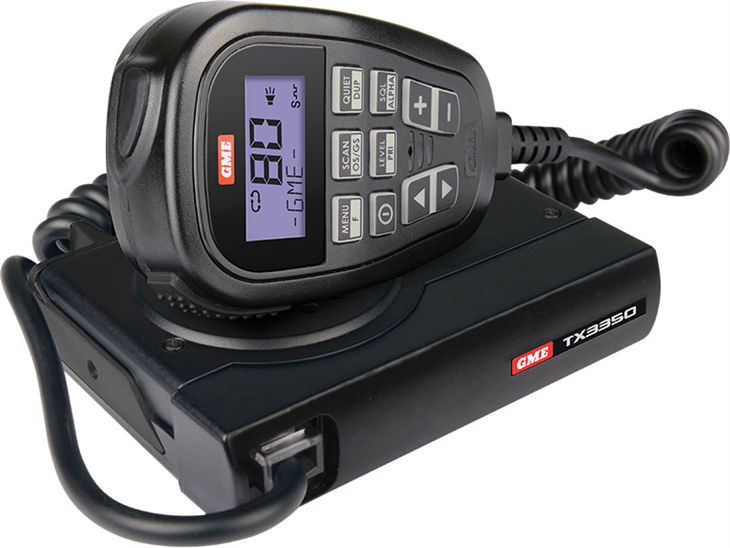Pre-Trip checklist
Vehicle Preparation
There is no other way of telling you this, before you go on a trip make sure you have serviced your vehicle and everything is in good working order. All too often people choose not to do this and they end up with problems along the way. It doesn’t matter if you get it done professionally or if you like to do it yourself, just do it.
The last thing you want to do is to ruin your holiday or trip and, potentially, put yourself and or your family into a life threatening situation.
Things to consider if you are wanting to prep your car yourself
If you’ve ever driven on rough corrugations you’ll know they can loosen any screw, bolt and nut which is not done up properly.
Make sure your car’s exhaust system is adequately attached to the vehicle body or chassis to support it under severe conditions.
Check your suspension, this is one area of your vehicle that gets a beating and just because it’s hidden underneath the car, ignore it at your peril.
I always install dual batteries, particularly if using several accessories such as fridge or inverter, but if you don’t have a major energy drain you may not need to do this.
If you’re going to travel through dust or drive through water a snorkel is a good idea, at the very least take a bonnet skirt to prevent water entry into the air cleaner intake.
Get a workshop manual for your vehicle, either in paper form or digitally so you can view it on an Ipad or similar. Even if you’re not able someone else may be able to assist if you have the right gear.
You can get carried away by trying to take every spare part you can think of but consider the age of your vehicle and what might or might not have been changed over recently and take into account what you can reasonably carry.
Some suggestions for spare parts for your vehicle are:
Fan, alternator and air conditioner belts (note some of these may be just one belt these days).
Take a few spare fuses, some extra wiring, extra light bulbs and insulating tape.
Radiator hoses, depending on how old your car is, might be a good idea.
A length of heater hose (1m), some ring clamps and an assortment of bolts, nuts and washers.
Plastic cable ties and a bit of tie wire are always a good idea so you can make a temporary fix.
Fuel, oil and air filters (if you check these before you go they should not be necessary, if you’re on a long trip you may need to get your vehicle serviced whilst travelling).
Engine oil, maybe some brake and transmission fluids if you’re in an older vehicle.
Make sure all lights are functioning especially if you’re towing a camper or caravan. I’ve been caught out a couple of times towing things. Just because the lights were working the last time you used the trailer doesn’t mean they will work the next time you hook it up.
Check your suspension and replace shock absorbers if worn or leaking.
Take some glue, eg Araldite and some WD40 or equivalent and some duct tape.
I like to take a second spare wheel and tyre but this does take up a lot of extra space. If you don’t have one then take a puncture repair kit for the type of tyre you may need to fix.
Take a fire extinguisher, the last thing you want to do is to lose your rig, especially in the middle of nowhere. Don’t pull up on grass or Spinifex after driving, I have seen cars burn down as a result of hot exhausts on soft grasses.
Loading your 4WD

If you’re using a roof rack don’t overload it, it has a specific weight capacity.
Overloading a roof rack or putting too much weight on top raises the centre of gravity and can contribute to a roll-over.
You’ll also increase your fuel usage due to the extra wind drag but this is the trade off for extra space.
Too much weight can also cause the rack to break. Make sure everything is secure so you don’t lose it or find it shifting under heavy braking.
If you want to be able to pack away gear, food, your fridge then you might want to consider a drawer system for the rear of your vehicle. These can be commercially manufactured or as I did, made by a handyperson and can be a really useful addition to any vehicle preparation.
Please also consider what you are going to do with your rubbish, if you carry it in then you can carry it out. There are several options available but a common option is a bag attached to the spare wheel.
Tyres
Check all tyres and tyre pressures – always carry two spare tyres if you can. Ensure your tyres are in good condition and if not replace them. If space is at a premium then you might consider a rear bar and wheel holder that can be fitted to your vehicle to provide this benefit.

A tyre pressure gauge is handy especially if you find you have to let tyres down to drive on sand and then re-inflate. A good quality 12 volt air compressor and fittings will help you out here.
It’s not often a valve lets you down but carrying a couple of spare tyre valves and caps might get you out of a bind. Also make sure you are carrying the right wheel brace, an hydraulic jack and a base plate in case you need something to support the jack in soft ground or sand.
If your tyres are worn beyond 50% then we recommend fitting new ones. Lots of people have varying opinions on tyres, some from personal experience and some from gossip over a beer or two at the pub.
We’ve had different tyres over the years but this time round we are running another set of Cooper Tires. These tyres are extensively tested in Australian conditions and we like the look of the new Armor-Tek sidewall protection.
We also spend a lot of time off the bitumen so we’ve taken the 50/50 approach in all terrain tyres and fitted the Cooper S/T MAXX to our Prado.
What else might you need?
A good quality 12 volt fridge (e.g. Engel or Waeco fridge/freezer), to keep things cold. If you’re staying in one place for a while then a solar panel might also be worthwhile.
Sometimes you can have just too much gear but you still want to take it. I’ve opted for a roof rack for the lighter equipment, eg a 30 second OzTent which is just too long for inside the car and a spare wheel but I prefer to not load it up too much and keep the weight down.
Some people like to carry paper maps for all areas they intend to travel to but there are many digital options on the market these days.

A good compass and GPS loaded with appropriate raster maps might be handy if you’re really going off the beaten track.
Always carry a good quality first aid kit. This should contain a number of triangular bandages, a couple of compression bandages, including something for snake bite, some small adhesive strips, antiseptic, saline, burn cream, cotton wool, Panadol or Aspirin, any personal medication required and if you have the time, attend a first aid course so you know what to do.
Tools, I take spanners, sockets, pliers, wrenches and screwdrivers to fit my vehicle.
Recovery gear – at least one snatch strap, rated shackles & winch gear if you have a winch. I carry an exhaust bag for jacking up the car if bogged and again, if you have the space, something like Maxtrax will help you out in sand work.
Take adequate water – use several 10L containers rather than one in case of a leak, or if you’re towing fit a water tank under your trailer.
What to do if you get into trouble?
Remember the age old advice, stay with your vehicle and use whatever means you have planned for to get help. Whether or not you have an EPIRB or PLB or an HF radio fitted to your vehicle it is important to be able to contact someone in the case of an emergency. More and more people are opting for a satellite phone for calling in remote areas these days but just have something!

A UHF radio is always good if travelling in a group or for general road communications. However do not rely on UHF radios or mobile (cellular) phone communications in remote areas.
Always take a little extra food and water. Throw in some water purification tablets or a pump in case you run out and you find some suspect water. A space blanket or two never goes astray as does a mirror, a torch and matches in case you need to light a fire. Remain calm and contact help and remember it may take some time for it to get to you.
So there is no use taking all this stuff if you don’t know how to use it. Before you go get your maps or GPS out and plan your travel. Know where you are going and how far it is between fuel stops.
It is important to know the distance your vehicle can get on a full tank of fuel and to remember to allow for the extra weight, driving in 4WD and on rough roads. You may need to even check that the specific type of fuel is available in some places.
Get familiar with all your other gear and learn how to use it and use it safely.
Do you require any permits to enter specific locations as you may need to apply in advance as some take some time to process?
It sounds like a lot to do but good planning makes for a great holiday.
I hope this helps, remember these are only suggestions but they will help you to form your own ideas about what you need to do to prep your vehicle for the trip of a lifetime.
Here is a vehicle prep checklist so you can tick the boxes
- Check all hoses
- Check wheel bearings
- Check suspension, springs, coils, shockers
- Replace all oils, filters and air filter
- Check radiator and hoses for leaks
- Grease tailshaft
- Check brake pads and fluid level
- Check battery levels and ensure electrical system is 100%
- Check wiper blades front (and back if you have them)
- Check your tyres, pressure and if you have the space consider a second spare
- Check your jack and wheel brace
- Check spotlights or driving lights for proper function and aim
- If you’re towing with an auto you may want to consider fitting a transmission cooler
- If you are operating in dusty conditions or are expecting water crossings consider a snorkel
- Check first aid kit
Written by Travel Outback Australia

